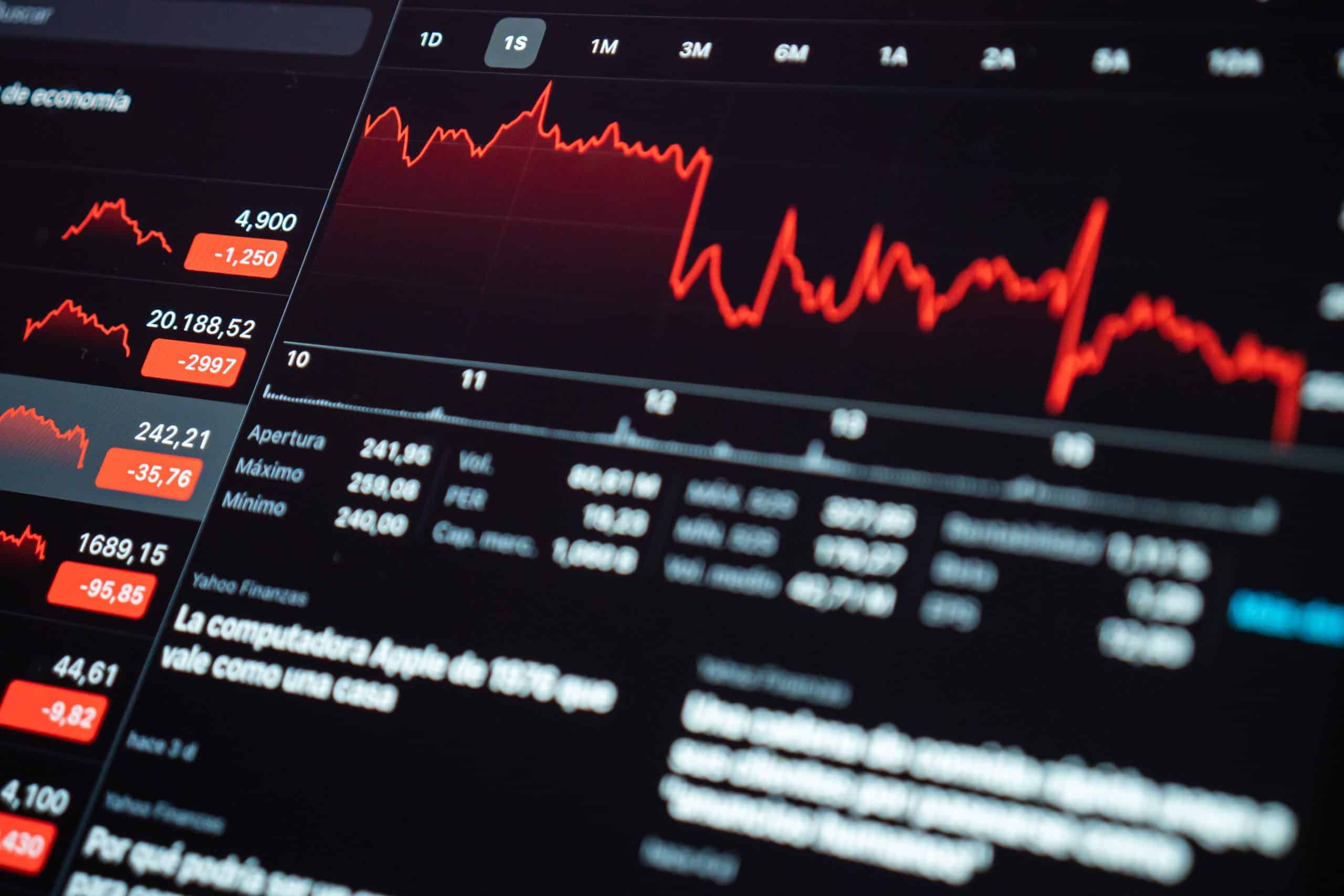Inflation fears rise as tariffs continue to evolve

Inflation fears rise as tariffs continue to evolve, impacting consumer behavior and business strategies by driving up prices and prompting consumers to seek alternatives while businesses adapt to maintain competitive advantages.
Inflation fears rise as tariffs evolve, creating uncertainty in various sectors of the economy. Have you felt the pinch at the grocery store or in your monthly bills? These economic shifts affect us all in one way or another, and understanding them can empower you.
Understanding the relationship between tariffs and inflation
To truly grasp the impact of tariffs on the economy, it’s essential to understand how they interrelate with inflation. Tariffs are taxes imposed on imported goods, and they can lead to higher prices for consumers. This dynamic creates a ripple effect throughout the market.
When tariffs increase, companies often pass on those costs to consumers, resulting in higher prices. As this happens, inflation can rise, affecting purchasing power. For many, this means tighter budgets and difficult choices. Understanding this relationship helps consumers become more aware of their financial landscape.
The direct effects of tariffs on inflation
Tariffs can drive up prices in several ways:
- Increased production costs for imported products.
- Higher prices for domestic goods due to reduced competition.
- Market uncertainty, which can lead to reduced investment.
These factors create a complex web of economic consequences. Also, it’s vital to recognize how inflation can vary in response to shifts in tariff policy. Sometimes, the government may adjust tariffs to control inflation, but the effectiveness of these measures can vary significantly.
As consumers, we are affected not only by the direct costs but also by the broader economic environment. Rising inflation can lead to lower consumer confidence, which ultimately impacts spending and economic growth. Understanding this interconnectedness is key to navigating economic change.
Your role as a consumer
As individuals, being informed about these economic realities allows us to make smarter decisions. Here are some strategies to consider:
- Track price changes in essential goods.
- Explore local alternatives to imported products.
- Stay aware of economic news and government policies.
With knowledge of how tariffs and inflation interact, you can better prepare for fluctuations in the market. This insight empowers you to manage your personal finances effectively.
By recognizing the influence of tariffs on inflation, we begin to see the broader picture of the economy. Understanding these factors is essential for making informed choices and preparing for the financial challenges that may arise from changing policies.
How current tariffs are reshaping markets
Current tariffs play a significant role in reshaping markets worldwide. As they change, businesses and consumers must adapt to an evolving landscape filled with challenges and opportunities.
When tariffs are imposed, the price of imported goods usually rises. This can lead to a shift in consumer behavior as people seek cheaper alternatives. Tariffs can create higher costs for businesses, which may influence the supply chain and pricing strategies.
Impact on Consumer Choices
Consumers often react to changes in tariffs by adjusting what they buy. The following factors can influence their decisions:
- Higher prices on imported items lead to exploring local products.
- Shifts in demand for certain goods based on cost.
- Increased awareness of where products come from and their prices.
As a result, local businesses may experience an uptick in sales due to shifting consumer preferences. In some cases, these changes benefit domestic producers, who can meet the demand for cost-effective alternatives.
Market Adjustments
Businesses must adjust their strategies in response to new tariffs. This might involve:
- Finding new suppliers who can offer better pricing.
- Reevaluating pricing structures to maintain profit margins.
- Enhancing productivity to offset increased costs.
Market dynamics can also shift as companies face competition from alternative products. This evolving competitive landscape encourages innovation and efficiency among businesses striving to thrive amid changing tariffs.
Total costs can fluctuate, impacting everything from manufacturing to retail pricing. Understanding these changes helps businesses and consumers navigate the complexities of a tariff-driven market.
The impact of inflation fears on consumer behavior
Inflation fears significantly influence how consumers behave in the market. When people worry that prices will rise, their spending habits tend to change. This shift can be seen in various sectors, affecting everything from luxury goods to daily necessities.
For many, concerns about inflation lead to more cautious spending. Shoppers might prioritize essential items over non-essentials. The uncertainty can cause a ripple effect, influencing demand for certain products.
Changing Spending Habits
As fears of rising prices grow, consumer choices often shift towards:
- Increased savings to prepare for potential price hikes.
- Buying in bulk when sales are available.
- Choosing generic brands over name brands to save money.
This behavior illustrates how consumers adapt to perceived economic threats. They tend to make decisions that help secure their financial well-being during uncertain times.
The Psychological Effect of Inflation
Psychological factors also play a role in how inflation fears shape consumer behavior. When people are anxious about the economy, they may:
- Reduce discretionary spending.
- Delay major purchases like cars or homes.
- Become more selective about luxury items.
These reactions can slow down economic growth, as decreased consumer confidence often leads to a drop in overall spending. When consumers worry, businesses may also feel the pinch, which can lead to adjustments in pricing and marketing strategies.
By examining these shifts in consumer behavior, we can see how deeply connected inflation fears are to the broader economy. Understanding this connection can help businesses anticipate and respond to changing market dynamics effectively.
Strategies for businesses to navigate tariff changes
Businesses face unique challenges as tariff changes occur. To thrive in this shifting landscape, they need effective strategies that adapt to new market conditions. Taking proactive steps can help businesses mitigate risks and seize opportunities.
One crucial strategy is to evaluate supplier relationships. Companies should assess their supply chains to identify areas of vulnerability. By exploring alternate suppliers, businesses can reduce dependency on imports that may be affected by tariffs.
Cost Management Techniques
Effective cost management becomes even more vital during tariff fluctuations. Some practical steps include:
- Conducting regular price assessments to understand cost impacts.
- Implementing efficient inventory management practices.
- Exploring automation and technology to reduce operational costs.
By streamlining operations, businesses can better absorb the financial pressures that tariffs might impose. Cost control also allows companies to maintain competitive pricing in a volatile market.
Enhancing Product Offerings
Another strategy is to innovate product lines. Adapting offerings can help businesses cater to changing consumer demands while navigating tariffs. Consider these approaches:
- Developing domestic products that do not incur tariffs.
- Creating bundles or packages to provide more value.
- Emphasizing unique features that differentiate products.
Innovation not only addresses tariff impacts but also positions businesses favorably in the eyes of consumers who value local or unique products. It can enhance customer loyalty and drive sales.
Finally, businesses should keep a close watch on regulatory changes. Being informed about upcoming tariff adjustments allows companies to pivot quickly. Having a flexible approach can be essential in adapting to the ever-changing dynamics of international trade.
Future trends: tariffs, inflation, and the economy
The interplay of tariffs, inflation, and the economy is continuously evolving. As we look to the future, understanding potential trends can help businesses and consumers prepare for upcoming changes.
One identifiable trend is the increasing use of technology to monitor and manage tariff impacts on global trade. Advanced analytics will become essential in predicting how inflation might respond to new tariffs. Businesses that leverage data effectively may gain a significant competitive edge.
Global Supply Chains and Adaptability
Another trend is the emphasis on resilient supply chains. Companies are likely to focus on:
- Diversifying suppliers to reduce reliance on single markets.
- Investing in local production to avoid tariff complications.
- Enhancing logistics to minimize costs.
By building adaptable operations, businesses can better react to tariff changes and mitigate inflationary pressures. The ability to pivot quickly will be crucial in navigating the future economic landscape.
Consumer Behavior and Market Response
As tariffs and inflation shape market conditions, we can expect shifts in consumer behavior. Trends to watch include:
- Growing demand for sustainable and locally-produced goods.
- Increased price sensitivity among shoppers.
- A greater emphasis on value and quality over brand loyalty.
These changes in consumer preferences will influence how businesses market their products. Brands will need to be agile, responding to shifts while maintaining a focus on quality and sustainability.
Additionally, government policy will play a crucial role in shaping these trends. Regulatory changes can lead to new tariff implementations or modifications, directly impacting inflation rates. Keeping an eye on policy discussions will be vital for anticipating market adjustments.
FAQ – Frequently Asked Questions about Tariffs, Inflation, and the Economy
How do tariffs impact consumer prices?
Tariffs increase the cost of imported goods, which often leads to higher prices for consumers. This can decrease demand for those products.
What strategies can businesses use to cope with inflation?
Businesses can manage costs by optimizing supply chains, increasing efficiency, and exploring domestic sourcing to mitigate the effects of inflation.
How should consumers react to rising inflation fears?
Consumers may consider adjusting their budgets, saving more, and seeking cheaper alternatives to manage their expenses effectively.
What future trends should businesses monitor regarding tariffs and inflation?
Businesses should keep an eye on regulatory changes, innovations in supply chains, and shifts in consumer behavior to stay competitive.





